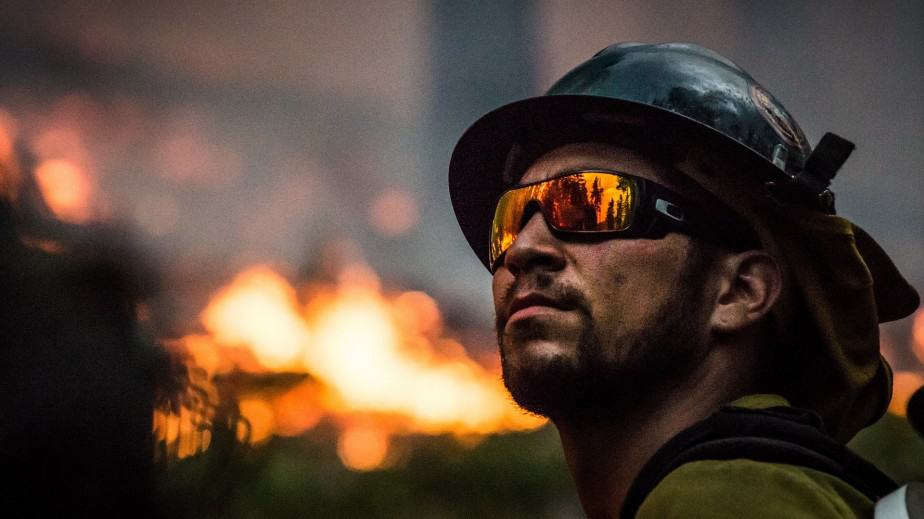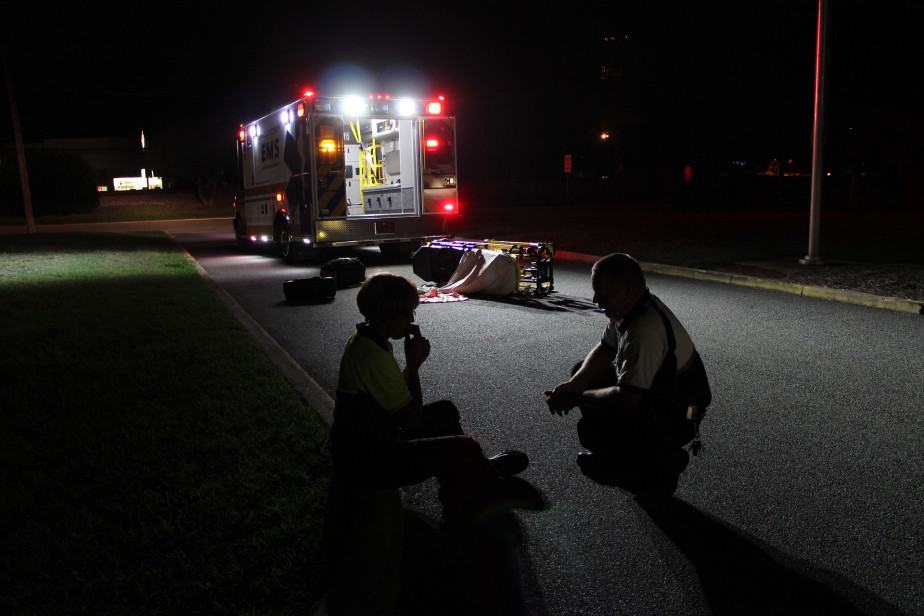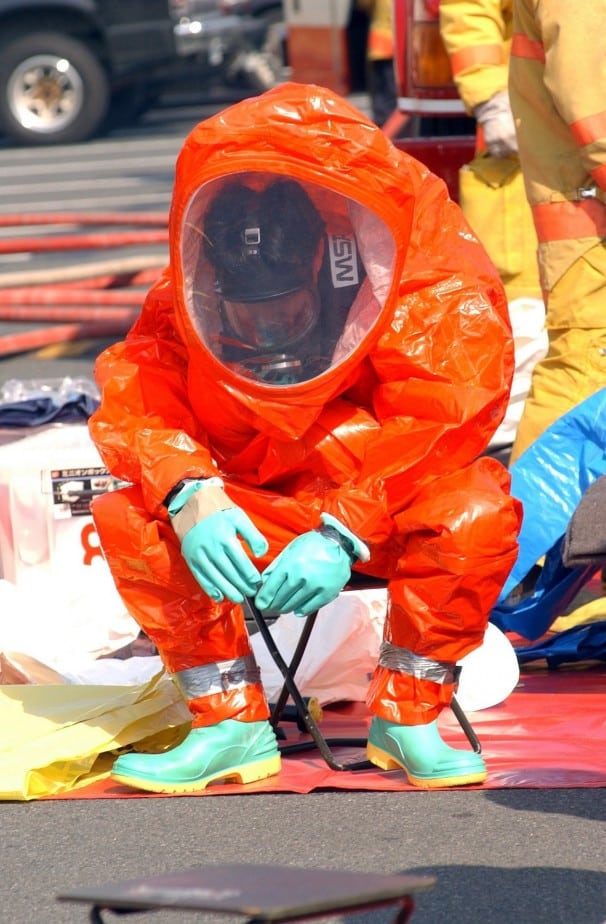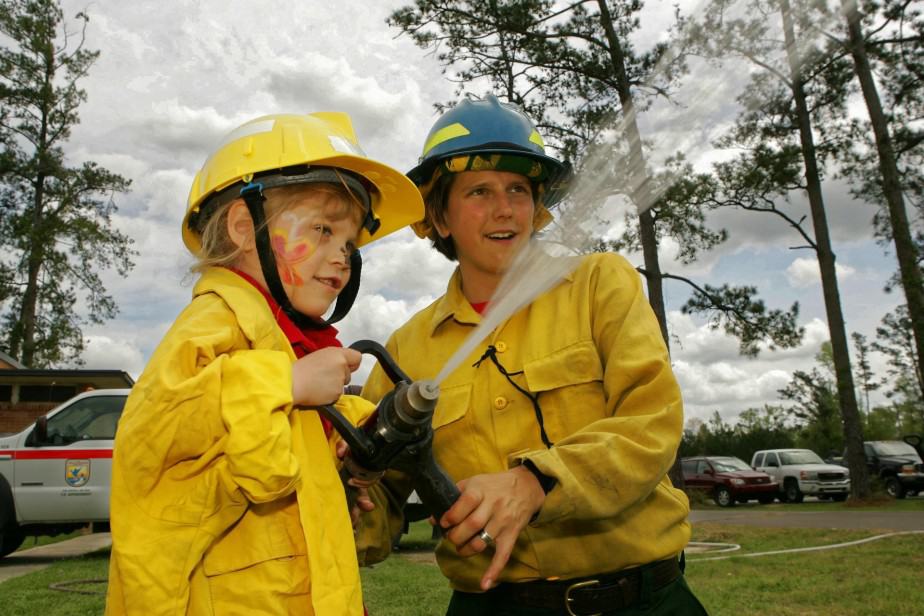As a firefighter, I have the privilege of serving my community and being someone that residents can depend upon. But, a firefighter’s role means a lot more than just putting out fires.
So, why are firefighters so important to the community?
Firefighters are dependable members of the community who assist in a wider range of situations than you might expect. We are rescuers, community leaders, social support, and role models. We can be there to help in all kinds of emergency and non-emergency situations.
This often means providing guidance and community support when the public may consider us to be off-duty.
We are always ready to respond to major fires, incidents, and accidents when the call comes in, but will also work with schools, care homes, and all kinds of other places where we can.
Why are firefighters so valuable to the community?
Firefighters are important members of the community because they are trained to deal with all kinds of needs and all kinds of people.
- Firefighters will handle residential, commercial and wildfires
- Firefighters can provide medical assistance as EMTs
- Firefighters can assist at the scene of road traffic accidents
- Firefighters can deal with hazardous materials
- Firefighters are stationed in some niche departments for specialist services
- Firefighters can enforce fire codes and preventative measures in commercial buildings
- Firefighters can inspire the next generation at fun open days
- Firefighters can give safety talks at schools and nursing homes
- Firefighters can help animals in need too (yes we get called for all sorts of animals problems)
- Firefighters can create a two-way relationship with the community
Let’s learn a little more about the 10 ways that firefighters are so important to the community.
1) Firefighters will handle residential, commercial, and wild fires.
It might sound a little obvious to say that we help the community by putting out fires, but this is still one of our most important jobs.
We have the training and equipment ready to tackle all kinds of fires – from small scale kitchen fires to major blazes in office blocks or apartment buildings. Everyone must have confidence in us to show up at your address as soon as possible to protect lives and property.
Residential fires are a common cause of emergency calls. Fires can occur in homes through accidents with candles and flammable objects, faulty wiring, malfunctioning appliances, lightning strikes, and more.
This is why we must prove ourselves to be strong, friendly community leaders. The same is true for any commercial building fires, such as office blocks, restaurants, and stores.
Can firefighters tackle wildfires too?
Wildland fires are another problem that we have to deal with and will require special training. This is more common in rural areas and hotter regions where there is a greater risk of wildland fire in forests or grasslands.
Wildfires are caused by dry weather but also by arson and accidents with campfires and cigarettes.

Experienced wildland firefighters trained for these situations can head out and manage the fire effectively. In areas like California, this training is more essential than ever as wildfires become more frequent.
Our role as community leaders here is as much about creating a best plan for tackling a fire as it is about preventing them. We all know Smokey’s statement “only you can prevent wildfires”. Well, it is up to fire services to ensure that this message gets across.
2) Firefighters can provide medical assistance as EMTs and Paramedics
Firefighters may be known best as those that literally fight fires, but that isn’t what the majority of calls are for.
Instead, most calls are for medical emergencies.
We can act as first responders in times of crisis to reach vulnerable patients. This also means that we can provide patient treatment and transfer as needed so they can receive treatment in the hospital.
So, it’s not unusual to see a fire truck at the scene of a medical emergency.
Are all firemen EMTs or Paramedics?
Usually, but not always. There is a requirement for many departments that anyone who wants to work as a firefighter must undergo EMT training (feel free to click the link to find EMT/Medic training near you).
We can either have this prior to our application or some departments will provide training on the job.
However, some very large or very small departments or volunteer departments may not require any sort of medical training as they don’t provide any medical assistance.

EMT training lets us handle medical emergencies that don’t require invasive treatment. This could be as simple as tending to a wound or a burn – both of which are essential skills on the fire ground – or administer CPR.
Most firemen are EMTs but not all firemen are paramedics.
There is a distinction based on our training and experience which determines the types of procedures we can handle. EMTs can act as first responders to assess a scene and deal with those non-invasive issues.
But, we may need to call in a paramedic firefighter for assistance. Either way, you can be sure that you are in safe hands.
3) Firefighters can assist at the scene of road traffic accidents.
Because we can provide both firefighting services and medical assistance, we often come and deal with road accidents in our district.
The NFPA offers some interesting data on this. The stats may be from 2014, but they give a good idea of what we do.
- In 2014, US fire departments dealt with 4,461,000 incidents on roads.
- 27% of those were on highways. This isn’t a big surprise given the volume of traffic and speed of the vehicles
- A further 24% occurred on residential roads.
- 67% of calls were for EMS and rescues. This includes those trapped in vehicles, major trauma from a collision, or cardiac arrests.
- Just 6% were car fires that weren’t related to EMS calls
Fire crews have the equipment necessary to tackle fires in vehicles and to extract victims from overturned cars.
Sometimes there is no way to safely retrieve someone with suspected spinal fractures or head injuries unless we take the roof of the car off or cut the door off.
Our EMS and paramedic training also allows us to handle medical incidents at the scene. We can work on patients in cardiac arrest, treat burns and wounds for the best prognosis, and much more. This range of skills gives victims the best chance of survival.
Furthermore, we have the organizational skills in scene management to ensure that we handle incidents effectively and efficiently.
We can work with the police and ambulance crews to prioritize cases in multiple-car incidents, and we can work to evacuate tunnels and support other drivers and bystanders.
4) Firefighters can deal with hazardous materials
Hazmat training is an aspect of firefighting that the public usually doesn’t know much about. But, if there is a major incident involving hazardous materials then someone needs to be able to control the scene and mitigate risk.
Hazardous materials could be anything from chemical spills from trucks to radioactive hazards from power plants, biological waste, or even chemical weapons.
Experienced hazmat techs can use protective equipment to access the situation, strategize the best approach, and contain the release.
Firefighters need to be prepared for these operations because we never know what we will encounter on a call.

For example, an initial call out to a truck crash might not mention that the truck contains dangerous materials or is leaking a lot of fuel.
If we don’t handle the spill correctly, it could lead to an explosion or endanger lives by way of lethal vapors. We also have to consider the risks in warehouses and plants with high quantities of household chemicals like bleach.
Also, you might be surprised at the number of incidents we are called for involving illegal drug labs.
5) Firefighters are trained for unique situations.
Because we have all of this specialist training and the skills to handle many different situations, you will find specialist departments in various locations.
This ability to diversify is essential for providing the best possible care and support in a community.
For example, areas based by water – either with lakefronts or coastal areas – need teams with experience in water rescue and marine fire services.
If that area has a major port, you will probably find there is a crew on hand to handle any accidents, fires or chemical spills in the vicinity.
The same is true for any airports.
It is safer to have engines and appropriate equipment on-site in case of any major fires in the buildings or aircraft crashes.
Teams in more rural areas may have departments that specialize in wildfire, search and rescue, and rope access. Firefighters have the opportunity to learn lots of new skills on the job so that they can handle anything thrown at them.
This also includes disaster relief efforts in cases of storm damage and flooding. The job really is more varied than you realize when you first consider becoming a firefighter as a kid.
It isn’t all rushing out on fire trucks to put out burning buildings.
6) Firefighters can protect buildings through fire codes and regulations.
A lot of the work that goes on in a fire department is about prevention rather than suppression. We don’t want to have to go out and fight fires every day when we could educate people on how to avoid them instead.
Part of this response involves dealing with fire codes and regulations. There are more than 300 fire standards and consensus codes used by the NFPA.
It is up to local authorities and fire marshals to ensure that building owners comply with them. If we don’t, we could put people at risk.
These codes and standards relate to the fire equipment contained in a building, both in their effectiveness and their maintenance. This means separate codes for sprinkler systems, fire alarms, foam systems, and other extinguishers.
There are also regulations on the storage of hazardous materials in a building, such as fuel in a garage, dry cleaning materials, or other flammable or aerosol products.
In addition, there are all the codes on building occupancy, escape routes, ventilation, and more.
This is something that we don’t really think about unless we are personally responsible for the upkeep of a building or business.
We can walk past fire extinguishers and under smoke detectors and forget that someone is responsible for ensuring they work and are maintained regularly.
7) Firefighters can inspire the next generation during public events
Firefighters are great role models for the next generation. Kids can learn a lot from us, not only about how to stay safe but as responsible members of their community.
That is why it is so important that we take the time to engage with children and the community in an educational setting.

Options will vary between stations and departments. But, it isn’t uncommon to see fire crews attending schools for special visits or opening up the station for tours. You may also find that a station will arrange a fire truck drive by for birthday celebrations.
School visits are a great way for us to teach important information to large groups of children in a safe, familiar environment.
This is ideal for younger children learning the basics of fire safety and prevention. They have the support of their peers and teachers while we talk to them about what they should do in an emergency.
These trips also offer a chance for kids to see us away from the flashing lights and emergencies. Children may associate us with scary situations, so it is nice to remind them that we are friendly, normal people underneath it all.
Can I take my child to a fire station?
Another option for kids is to come and see the fire station and learn more there. This is a great idea for smaller groups of responsible kids.
Schools can send classes to learn more about the equipment, fire trucks, and the procedures in the station. This could be helpful for pre-teens that are interested in fire prevention as a possible career.
The tour gives a more realistic insight into what it means to be a firefighter.
Depending on the facilities, children may also get to take part in some hands-on activities.
This could include a set-up in a smoke-filled room or a burn trainer where they need to use what they learned to get out safely. It is extreme, but it is the sort of immersive experience that stays with them.
Can children become fire cadets?
Many fire departments will have a fire cadet program where teenagers can gain skills and training. This is a great stepping stone into the world of professional fire service. Cadets can learn some basic skills related to firefighting and fire science.
They also get to build relationships with the team and life skills that will set them up for adulthood. This is a great program for those aged 16-20. Those that are successful and enjoy the role can then go on to college or work on their qualifications in order to join the fire service.
8) Firefighters can provide guidance for seniors.
It isn’t just children and teenagers that can benefit from a little community support and guidance. There are plenty of vulnerable seniors out there that might not have adequate fire safety equipment or plans in place in their homes.
One way that we can do this is to visit seniors within their homes. We can come to them to take a look around and see how we can help.
These home assessments are simple, friendly evaluations of the fire equipment and hazards in a property.
Some residents may live in homes without a clear route to a fire exit. Cluttered homes with narrow halls are a problem, especially for seniors that also need walking aids.
Seniors may also have inactive smoke alarms or find that they struggle to change the batteries. Smoke alarm installation and battery change is a simple task that can save lives.
Will firefighters visit my nursing home?
Some fire departments will allow care providers to schedule a visit to a nursing home. We can come and talk to staff and residents as a group so that everyone is on the same page.
Residents may need a refresher course on basic fire safety, especially if they have cognitive problems. The staff also needs a plan in place that is comprehensive and understood by all in the event of a fire.
This means developing evacuation routes, emergency meeting points, and protocols for handling fires. We will also help to test alarms and evaluate equipment.
9) Firefighters can help animals in need
A lot of the roles of firefighters in the community relate to the way we help our fellow human residents. But, there will also be times when we need to rescue animals too.
We will try and save any creature that is at risk in the event of the fire where we can. This means that we will always do our best to locate and treat pets where possible.
In fact, you may have seen videos and stories online of firefighters performing CPR on dogs. These animals can suffer the same effects of smoke inhalation and we can use our training and equipment to revive them. They are part of your family so we will always do our best for them.
Do firefighters really rescue cats from trees?
Somehow, the idea of the firefighter saving a cat from a tree has become quite the cliché. You see it all the time in cartoons.
Perhaps we use it in kid’s cartoons to show the lighter side of being a firefighter, rather than all the emergencies and destruction. It is true. We do save cats from trees, roofs, and anywhere else that they get stuck.
We also save birds caught up in netting and retrieve ducklings from drains. Assuming it doesn’t put a firefighters life or safety at risk, if there is a creature in distress and we have the tools to help, we will help.
10) Firefighters have one of the strongest support systems and symbiotic relationships in the community
Finally, there is a strong system of support between firefighters and their communities. Often, we look towards community leaders as providers of a service with a one-way system of care support.
We expect the police to be there to protect us from harm, arrest the bad guys, and offer security.
But, we don’t always look at what we can do to help them.
It is different with firefighters and this comes down to the importance of community spirit and that equal relationship on both sides.
Small towns have dedicated teams of volunteer firefighters (check out our article on why you should become a volunteer firefighter) with members of the local community stepping up to help.
Some may become paid firefighters after training or just continue to do their civic duty. As a result of this dedication, and other issues with funding, local communities see the sacrifice made.
There is an appreciation of local concerns and a strong relationship built on respect where communities and firefighters help each other.
What is the adopt a fire station program?
One way we see this two-way relationship is through local adoption programs. Residents can adopt a station or a hydrant to play their part in looking after their area.
Adoption programs for stations give citizens the chance to donate their time, money, or other goods to stations in need. This could be equipment for the kitchens, home-cooked meals, workout equipment, or anything else of use.
There are many reasons why firefighters are so important to the community.
These 10 reasons firefighters are important for the community are just the start. Firefighters are beloved in the community because they are a consistent and active part of it.
They aren’t just there in those emergency situations to save lives and fight fires. They are always on call to offer support to the most vulnerable so that everyone has the protection they need in their homes.
They inspire people to do better in their community and teach people of all ages about hazards and how to handle them. There is no issue to big or small and communities respect that.
Sources:
https://www.usfa.fema.gov/prevention/outreach/fire_safe_seniors.html
from FirefighterNOW https://firefighternow.com/10-reasons-firefighters-are-important-to-the-community/
No comments:
Post a Comment